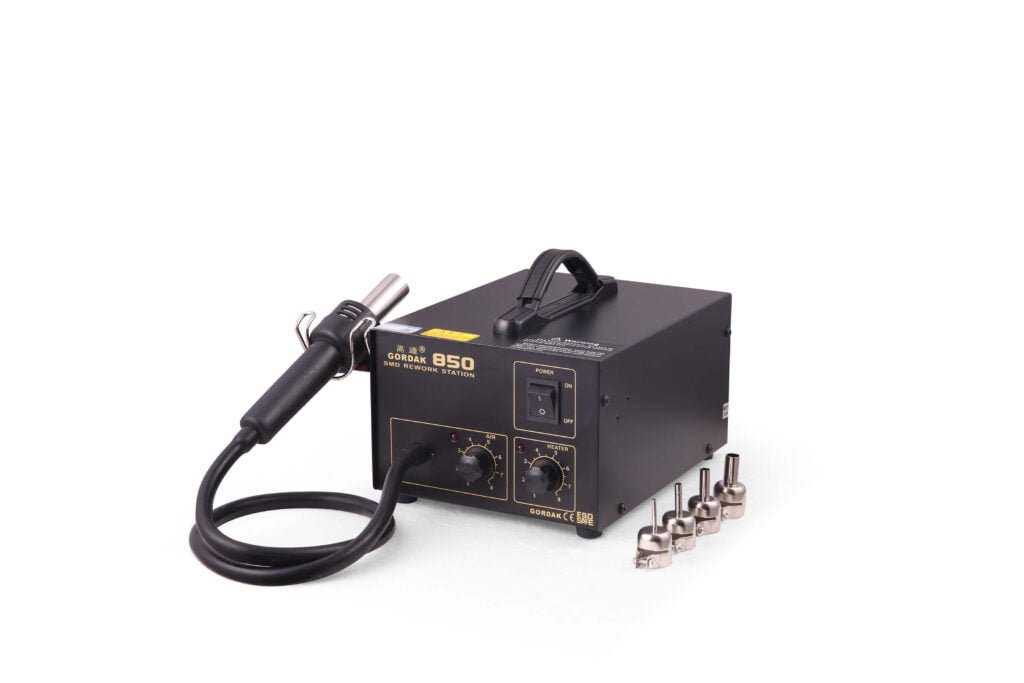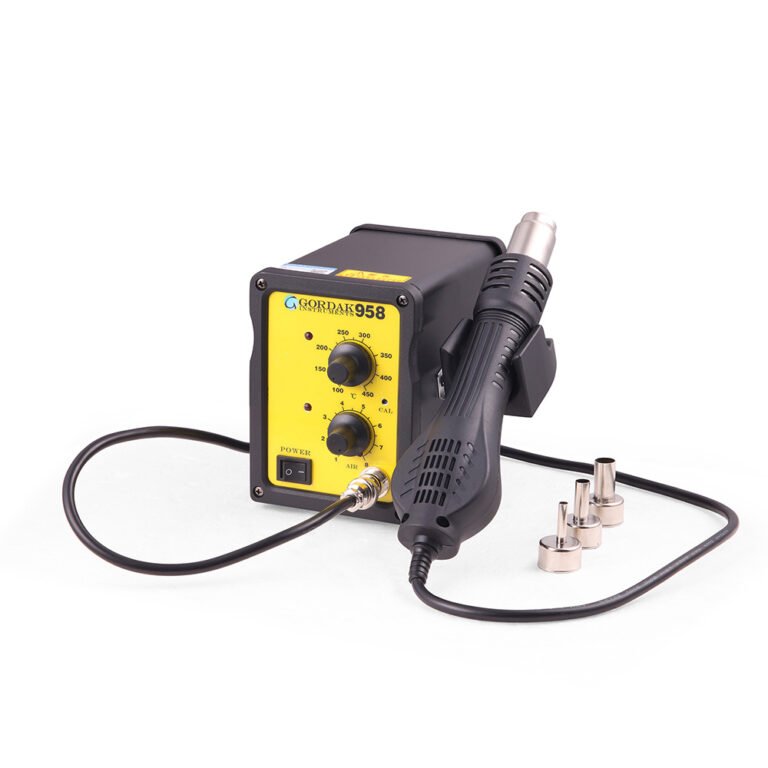Desoldering surface-mounted devices (SMDs) is a critical process in electronics repair, rework, and prototyping. With increasing use of compact and densely populated PCBs, having the right tools and techniques is essential. One of the most effective and non-invasive tools for this job is the hot air rework station.
At Gordak Electric, we specialize in developing reliable, easy-to-use hot air rework stations that support technicians and engineers in achieving safe and efficient desoldering results. In this guide, we explain how to properly desolder SMD components using a hot air rework station.
Why Use a Hot Air Rework Station for SMD Desoldering?
SMD components are soldered directly onto the PCB surface and often have multiple fine-pitch leads or pads. Traditional soldering irons can struggle with such precision work. A hot air rework station:
- Provides contact-free heat, reducing risk of mechanical damage
- Allows for uniform heating, especially on multi-pin components
- Is suitable for a wide range of SMD packages, including SOIC, QFP, and BGA

Tools You’ll Need
- Hot air rework station (e.g., Gordak 850, Gordak 857, Gordak 958 series)
- Anti-static tweezers or vacuum pickup tool
- Flux (optional, but recommended)
- Magnification (optional for small components)
- Solder wick or solder sucker (for cleaning residual solder)
- ESD-safe mat and wrist strap (for static protection)

Step-by-Step Guide to Desoldering SMD Components
1. Power on the Rework Station and Set Parameters
- Temperature: Set to around 280°C to 350°C, depending on the solder type and board sensitivity
- Airflow: Use low to medium airflow to avoid displacing nearby components
- Wait for the hot air gun to reach the set temperature before proceeding
2. Prepare the Work Area
Ensure your PCB is clean, dry, and secured on an anti-static surface. Apply a small amount of flux around the component to help the solder melt evenly and reduce oxidation.
3. Select the Correct Nozzle
Choose a nozzle that suits the size of the component. A smaller nozzle offers better control over airflow and heating focus.
4. Apply Heat Evenly
Hold the hot air gun about 2–4 cm above the component. Move the nozzle in gentle circular or side-to-side motions to distribute heat evenly across all solder joints. Avoid holding the nozzle still to prevent overheating the board.
Watch closely — as the solder melts, the component will become free.
5. Lift the Component
Once the solder is molten, carefully lift the component using anti-static tweezers or a vacuum pickup tool. Do not force it—if there’s resistance, continue applying heat for a few more seconds.
6. Clean the Pads
After removal, clean the remaining solder from the pads using solder wick or a solder sucker, followed by gentle wiping with isopropyl alcohol. This ensures a clean surface for future reinstallation or inspection.
7. Cool Down and Power Off
After desoldering, return the hot air gun to its holder. Allow the air to run for a short time to cool the heating element (especially in Gordak models with intelligent cooling), then switch off the station safely.
Safety Tips
- Always wear eye protection when working with hot solder
- Use ESD-safe tools and environment to protect sensitive components
- Avoid overheating the PCB to prevent pad lifting or delamination
- Practice on scrap boards before working on valuable electronics
Why Choose Gordak Electric?
Gordak Electric is a leading manufacturer of hot air rework stations and soldering solutions. Our equipment is trusted globally for its:
- Stable and precise temperature control
- Durable, high-efficiency design
- User-friendly interfaces for both beginners and professionals
- OEM and ODM support for global clients
To learn more about our product range or request a quotation, please contact us:
Email: info@gordakelec.com



